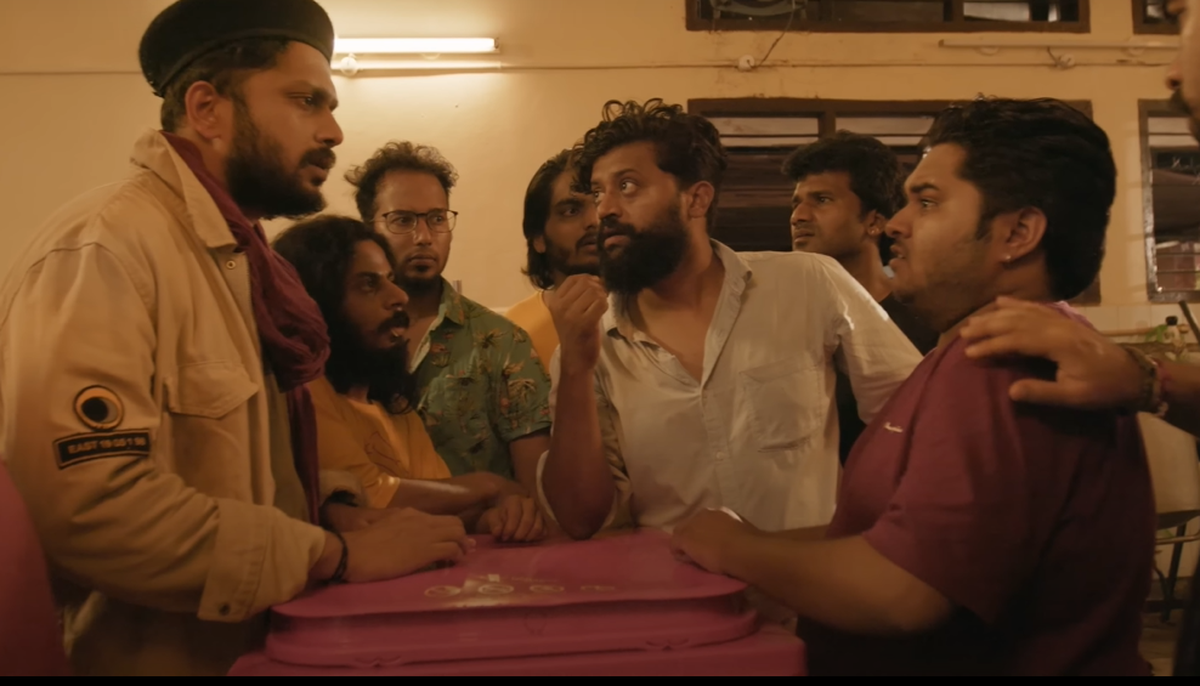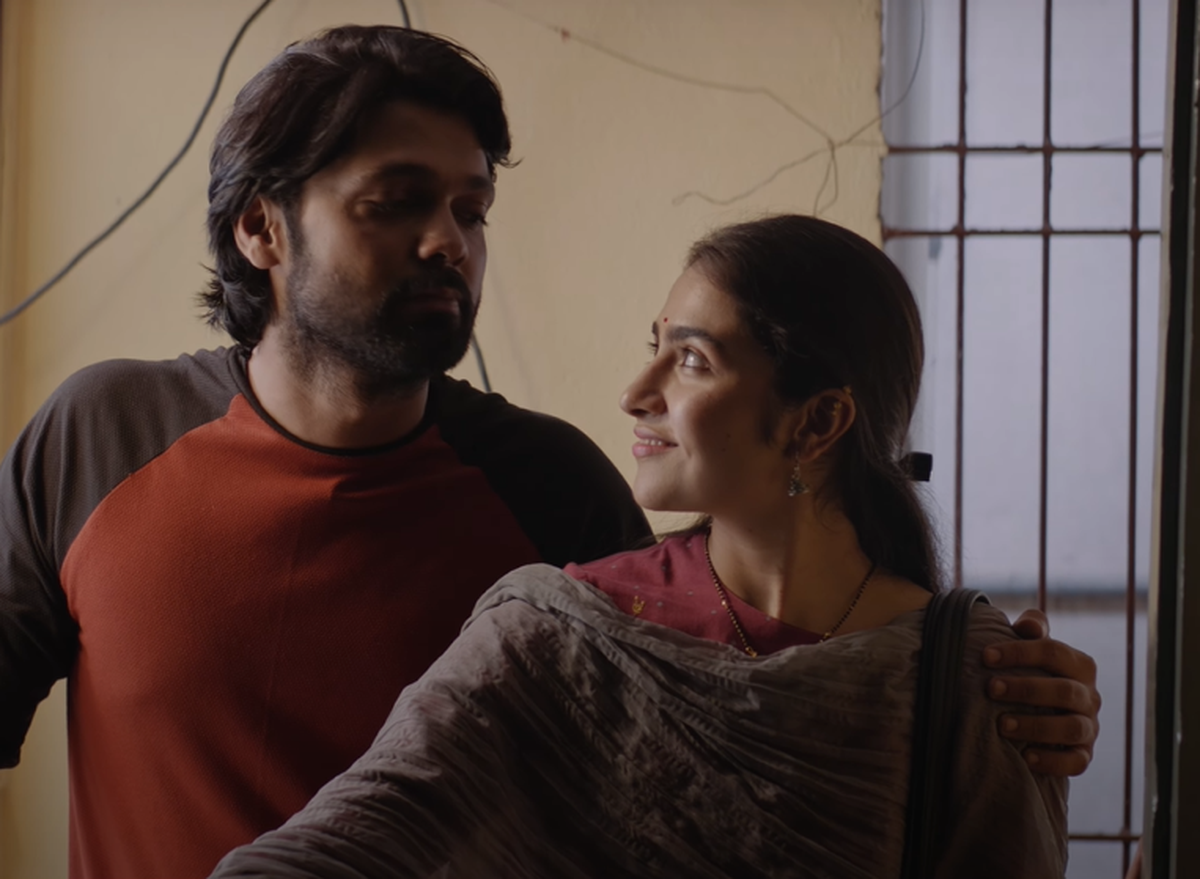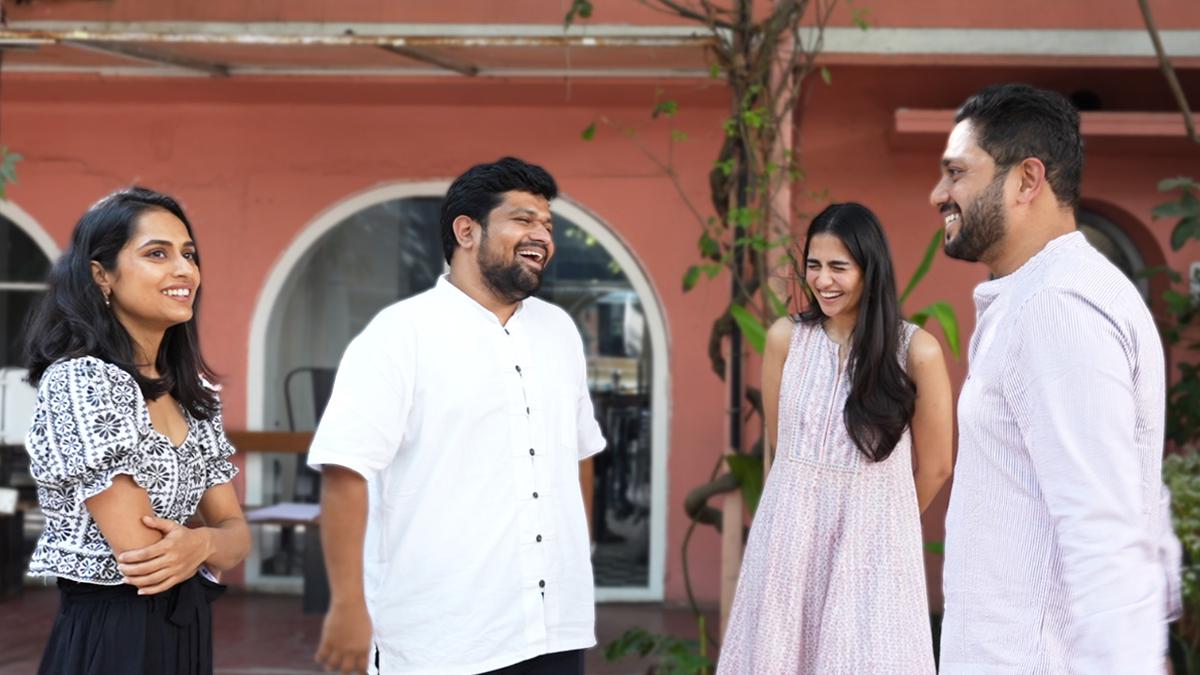The Hindu’s Kannada cinema roundtable: Nithin Krishnamurthy, Rukmini Vasanth, Sindhu Sreenivasa Murthy and Shashank Soghal on their achievements this year

“You make your first film only once. You can do it the way you want. Once you get past it, you get into the business aspect of cinema, and that’s when the artistic side begins to die. There are chances of you losing your innocence,” says director Nithin Krishnamurthy, during The Hindu’s Kannada cinema roundtable. It is with this innocence that all the participants of the roundtable — Nithin (director, Hostel Hudugaru Bekagiddare), Sindhu Sreenivasa Murthy (director, Aachar & Co), Rukmini Vasanth (actor, Sapta Sagaradaache Ello) and Shashank Soghal (director, Daredevil Musthafa) — were able to emerge as some of the unique talents from the Kannada film industry in 2023.
Sindhu grew up watching Anant Nag’s ‘Ganesha series’. “The protagonist was a grey character in those films. It was interesting that the hero was not a larger-than-life figure. But I felt the production value of Kannada films could go up, as they lacked aesthetics,” she observes. Sindhu’s Aachar & Co, a family drama set in Bengaluru of the 60s and 70s, was propelled by striking set designs and cinematography. It felt like watching a Wes Anderson film, as observed by critics and cinephiles.
Sindhu Sreenivasa Murthy in ‘Aachar & Co’.
A Wes Anderson touch
“What I enjoyed in Wes Anderson films is that he leaves his stamp in all his works. You watch any film of his, and you know it bears his signature. He puts a lot of attention into the music, costumes, and cinematography. I love that he tries to create a unique experience. Even when it comes to his humour, you don’t see the rolling-on-the-floor laughing type of moments in his films. The comedy is very awkward, and many in-between moments are funny,” she describes.
Nithin, who ensures he watches one film every day, adores Edgar Wright and Upendra. As he aspired to be a filmmaker, he missed genre-specific entertainers in Kannada.
“I felt filmmakers tried to offer us wholesome entertainers. But we needed more serious entertainers. You can make an entertainer in the violent genre like Quentin Tarantino does,” says Nithin. His idiosyncratic Hostel Hudugaru Bekagiddare, a rip-roaring comedy on what unfolds one night at a hostel, pays homage to all his favourite filmmakers even as it stays interesting with hand-held cinematography and dialogues that sound spontaneous.

A still from ‘Hostel Hudugaru Bekagiddare’.
| Photo Credit:
Special Arrangement
Influence of theatre
Shashank is a stage actor and loves watching plays. “You learn the nuances of cinema through theatre,” he says. An avid reader, his Daredevil Musthafa was adapted from Poornachandra Tejaswi’s short story, a college drama with a message of communal harmony. Shashank says that he had a complex over Kannada films during his college days. “My friends would tease me because many remakes were made in Kannada back then. A Cyanide or a Lucia would come out rarely. In that sense, I would say I learnt a lot from bad films.”
ALSO READ:A Daredevil story: How a rookie Kannada film team excelled in promotions
Meanwhile, Rukmini is basking in the success of the two-part Sapta Sagaradaache Ello (SSE Side A & Side B). Growing up, She missed watching intense love stories in Kannada. “I didn’t like that the love angle was just part of our films. We would hardly see filmmakers exploring a love story in its entirety.”

Rakshit Shetty and Rukmini Vasanth in ‘Sapta Sagaradaache Ello’ (Side A).
| Photo Credit:
Special Arrangement
The actress is now busy managing her shoots for three films (An untitled film with Vijay Sethupathi, Bhairathi Ranagal with Shivarajkumar, and Hombale Films’ Bagheera). She describes this phase as a blessed one. “After having no work for three years, I was like “come at me”. I wanted more work. I had to prove myself. I am not letting this busy period overpower me,” she says.
The Kannada audience would want to see more of Rukmini even as she has just completed her first Tamil film. “I don’t want to limit myself to one language. Also, working in another language has shown me the level of command I am capable of in Kannada. My grasp of Tamil isn’t great. So this is a challenge I want to crack, but at the same time, there is no question of not continuing in my home ground, which is Kannada,” she explains.

Sindhu Sreenivasa Murthy, Shashank Soghal, Rukmini Vasanth and Nithin Krishnamurthy ahead of the roundtable.
| Photo Credit:
Special Arrangement.
Each of the artistes was part of a distinct film and had to overcome challenges specific to their projects. Sindhu opens up on making a film with an almost all-woman team. “It wasn’t an intentional decision. It started with getting Bindhumalini on board, along with her knowledge of Carnatic music and jazz. Suddenly we realised that it’s almost an all-woman team; Ashwini (Puneeth Rajkumar) ma’am was producing it. We got Hema ma’am as the sound engineer, Inchara Suresh as the costume designer, and Dannilla Correya as our creative producer. I loved the fact that their attention to detail was fantastic. These women were very patient and empathetic human beings as well,” she says.
Politically-relevant theme
Making a film on a politically-relevant theme, Shashank was extremely nervous till the release of Daredevil Musthafa. “The film’s premiere show gave me the chills. I didn’t know how people would react. I didn’t make this film because the story was political. When I read the story, it changed my world view. I just wanted to make an honest film, and eventually, I was happy with how the people of Karnataka responded to it,” he admits.
ALSO READ:Understanding the deliberate pacing of Kannada films ‘Toby’ and ‘SSE (Side A)‘
A stillf from ‘Daredevil Musthafa’.
| Photo Credit:
Special Arrangement
Rukmini adds that she took away many learnings from SSE. “Based on my experience from SSE (Side B), I realised that, unlike in theatre, I don’t need to do the heavy lifting in films. Your cinematographer, the editor, or the music director can push the narrative. When I was shooting for (SSE Side B), my director, Hemanth Rao, realised I was pushing myself a lot. The story is from the male protagonist’s perspective. I had to stay blank in most of the scenes. It’s a difficult task to act with a blank face, because you feel you aren’t doing anything. You have to take the burden off yourself and tell yourself that other aspects of filmmaking will take care of the proceedings.”
Nithin’s film broke the traditional rules of filmmaking. “I was worried that film-goers, who prefer a simple cinema-watching experience, would find it hard to comprehend my movie. But, maybe because of the exposure on films people have through OTT platforms and the fact that they are eager to watch fresh content, they loved my film,” he points out. All four artistes conclude that they are keen to put out quality work consistently to stay relevant in the industry.

